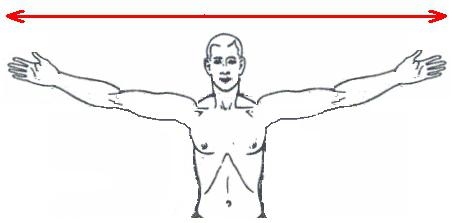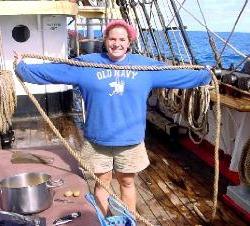From ancient times in Russia, to characterize a hero or just a big man, they said: "Oblique fathom in the shoulders." What is this - fathom? Is this an accurate definition of chest width or an artistic hyperbole? Let's figure it out. After all, the meter, centimeter (and at the same time a kilogram and a liter) customary for us were taken relatively recently as measures.

Already in ancient times, man felt the need to determine the length. This was required for calculating distances, for building buildings, for measuring the amount of goods (for example, fabrics). Therefore, people were looking for some universal measure of magnitude. As a basis, as a rule, the parameters of certain parts of the body of an adult man were taken. So in Kievan Rus was born fathom - a measure of length equal to the distance of two arms spread out in opposite directions. The origin of this term is associated with the Old Slavonic “squeeze”. In the Ukrainian language, there are still concepts of “reach”, “diminish” (reach, achieve). In Russian, this term is preserved in the word "oath", because when people swore, they extended their right hand up.

Naturally, people are different, and therefore the range of hands is different for everyone. Fathom in Kievan Rus ranged from a meter and 42 centimeters to a meter and 52 centimeters. Along with this measure, the lengths were in walking the tops, arshins, span, elbow. With the elbow it is clear - this is the size of the ulna, but what is a span? This is the distance between the thumbs and the index fingers maximally spaced apart. The value is also relative - after all, a professional pianist has a much larger span than usual. And there were different fathoms: fly, Greek, customs and the already mentioned oblique fathoms.
It is interesting that among the British the standard measures of length were ... their kings. So, the official foot is the size of the foot of John Bezemzelnoy, and the yard is the distance from the last phalanx of the middle finger of the right arm extended forward to the tip of Henry’s nose. Since the parameters of a certain person were taken as a standard, there were no such dissonance in the British Isles as in the Slavic lands. Therefore, in the sixteenth century the official fathom was adopted - 2 meters 13.36 cm. But even in our country everything was gradually unified. With the access of Russia to the seas and the development of shipping, fathom was borrowed from the British. After all, the rope to which the load was tied to measure depth was measured by the coverage of two hands. This is actually equal to simple fathoms. But since 1958, a single standard of this measure of length, equal to 1.8288 cm, was adopted in shipping.

It remains only to find out what oblique fathom is. To measure it, an adult growth man raised his right hand with outstretched fingers. The distance from the end of the middle finger to the heel was equal to oblique fathom. Even taking into account that the growth of a man in antiquity was less than the height of a modern person (about 165 cm), such a measure of length was still equal to two meters and 48 centimeters. It is clear that shoulders of this width simply do not exist in nature.
Arshin, the pound, the elbow and the oblique fathom were discontinued in 1917 when the Provisional Government adopted the Continental Metric System. The platinum meter is stored in London as a universal standard of length, although the British themselves, and behind them the Americans, still measure height and distance in yards and feet.